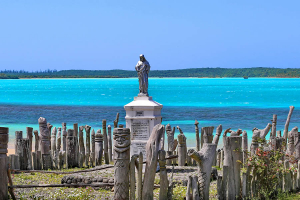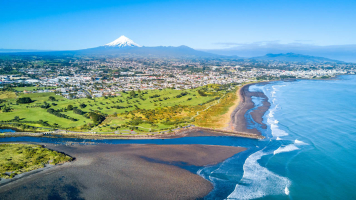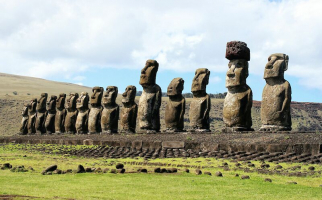Top 10 Most Beautiful Historical Sites in New Zealand
Modern New Zealand is a relatively young country, with the first Maori peoples migrating across the Pacific Ocean in the 13th century and European settlement ... read more...beginning less than 200 years ago. From archaeological sites showing traces of early Polynesian settlement in New Zealand to colonial-era sites marking early interactions between the Maori and Europeans to 20th century monuments for natural and human disasters. Toplist will introduce you to the most beautiful historical sites in New Zealand.
-
Waitangi is the most stunning historical site in New Zealand. If visitors to New Zealand only have time to see one historic place, it should be Waitangi. The small settlement in Northland's Bay of Islands is where, in 1840, Maori chiefs signed an agreement with representatives of the British crown, ceding sovereignty of their land. The Treaty of Waitangi (Te Tiriti o Waitangi) is New Zealand's founding document. Even though the British and other Europeans had been progressively coming earlier in the 19th century, colonization of New Zealand is widely believed to have commenced in 1840.
You can learn about Northland and New Zealand history at the Treaty Grounds at Waitangi. A full replica of the Treaty of Waitangi in both English and Te Reo Maori is on display in the Treaty House, an 1830s British-style home that was built for the official British Resident, James Busby. The ornately carved and ornamented marae (meeting house) tells the stories of numerous iwi (tribes) from all over New Zealand. In 2019, New Zealand's first National Historic Landmark, the Waitangi Treaty Grounds, was designated.
Location: Northland's Bay of Islands
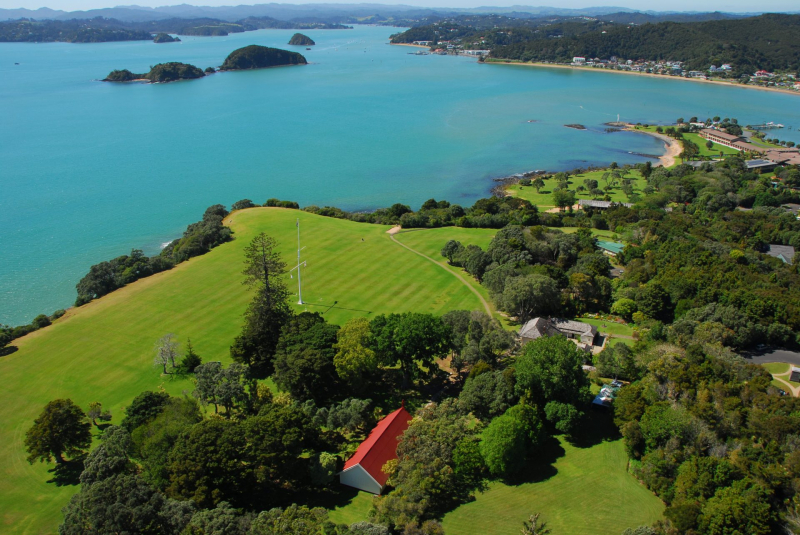
Photo: https://northlandcommunityfoundation.org.nz/ 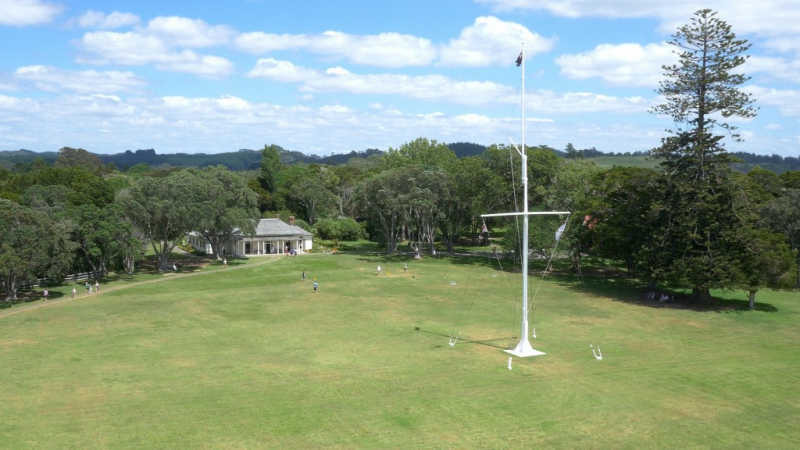
Photo: https://www.bayofislandseducation.co.nz/ -
Russell, just across the water from Waitangi, is now a laid-back town with holiday homes and boutique restaurants. It wasn't always like this, though. The settlement, then known as Kororareka, was dubbed "the hellhole of the Pacific" in the early nineteenth century. It was a notoriously wild region where personnel of British and American whaling ships got drunk, went to brothels, and occasionally battled with native Maoris. Russell's past is visible in the modest wooden Christ Church. The Battle of Kororareka in 1845 was one of the numerous clashes in the area between Europeans and Maori, and the church was caught in the crossfire. The church's exterior still bears the scars left by musket bullets.
Russell is inhabited by the Maori because of its excellent climate and abundance of food, fish, and fertile soil. Russell was then called Kororareka and was a small settlement on the coast. Early European explorers such as James Cook of England (1769) and Marion du Fresne of France (1772) commented that the area was quite prosperous. Russell is the second most beautiful historical site on the list of most beautiful historical sites in New Zealand.
Location: North Island
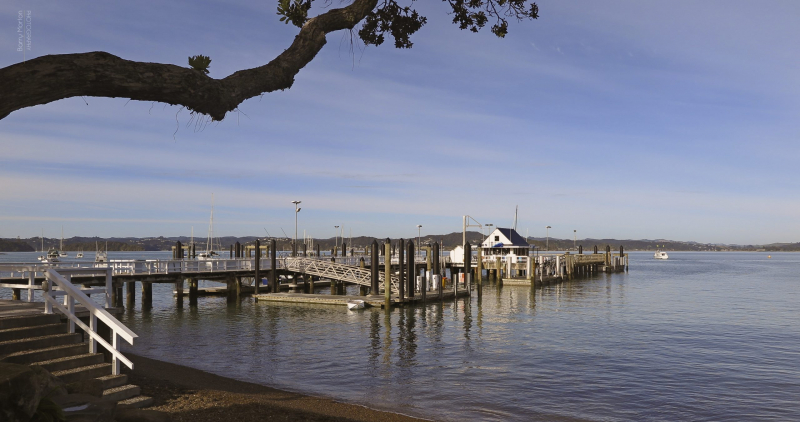
Photo: http://dreddly.net 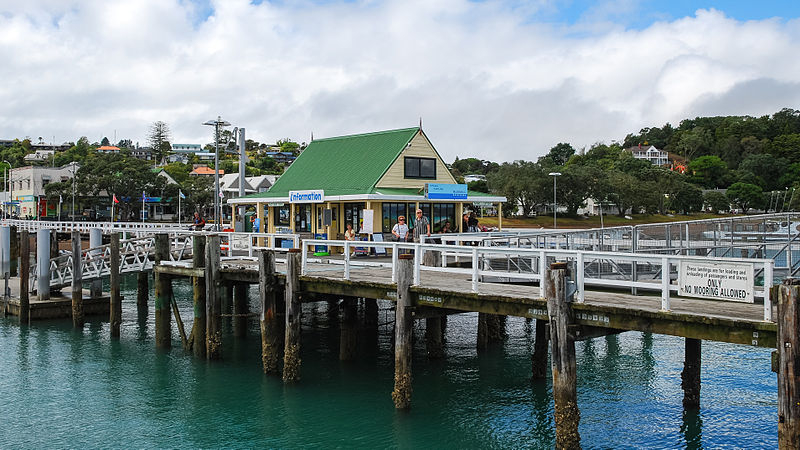
Photo: https://upload.wikimedia.org/ -
In regions of French Polynesia, France tested nuclear weapons throughout the 1960s and 1980s. Greenpeace's ship, the Rainbow Warrior, was routinely docked in New Zealand as part of its protests against the testing. In 1985, two French agents boarded the ship while it was docked in Auckland Harbour and blew it up. Portuguese-Dutch photographer Fernando Pereira was killed in the second of two explosions.
France, a close ally of New Zealand, initially denied any involvement, but the French operatives engaged were recognized by the New Zealand Police. Two were sentenced to ten years in prison, but France threatened to impose an economic blockade on New Zealand unless they were allowed to return. The bombing was criticized by New Zealand as a violation of international law, and it soured relations between the two countries for many years.
The Rainbow Warrior's wreck was transported from Auckland to Matauri Bay, near the Cavalli Islands, in December 1987. Now, only divers can visit the wreck itself, but an attractive memorial made by artist Chris Booth stands at Matauri Bay.
Location: 1727 Matauri Bay Road, Matauri Bay 0478, New Zealand
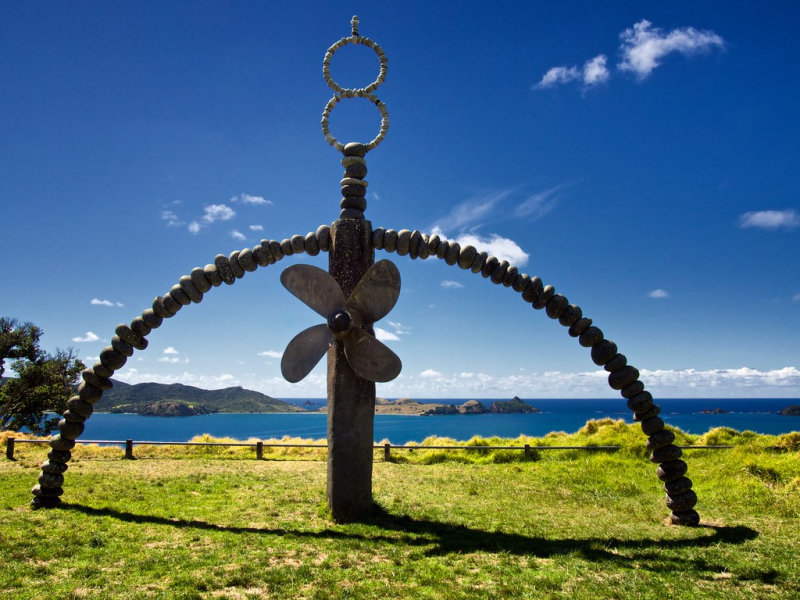
Photo: https://live.staticflickr.com/ 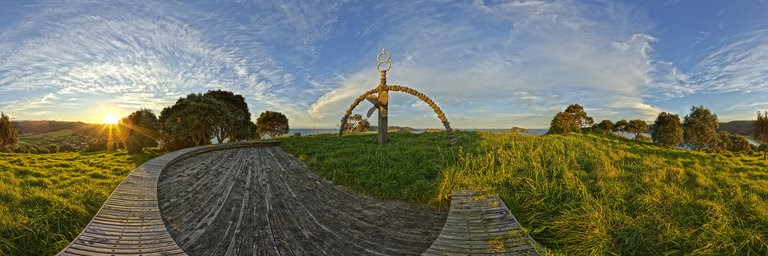
Photo: https://lh6.googleusercontent.com/ -
In the Hawkes Bay cities of Napier, Hastings, and Havelock North, many of the 1930s buildings tell a dramatic story. A 7.8-magnitude earthquake struck Hawke's Bay on February 3, 1931. It claimed the lives of almost 250 people, wrecked structures, and caused the coastline to recede indefinitely.
In the 1920s, the Art Deco aesthetic style was popular all over the world, but it was only in the 1930s that it became popular in New Zealand. Many of the buildings in Napier, Hastings, and Havelock North were reconstructed in the style. Taking an Art Deco tour, whether guided or self-directed, is now a major feature of visiting Napier.
Hastings has an exceptional collection of Art Deco, Spanish Mission, and Stripped Classical architecture, whereas Napier City is known as the Art Deco Capital of the World, with the highest concentration of art deco buildings anywhere on the planet. Discover the finest examples of Art Deco architecture worldwide by taking a tour in a vintage automobile or joining a guided walk. On the list of most attractive historical sites in New Zealand, Napier is the fourth most historical site beautiful.
Location: Napier
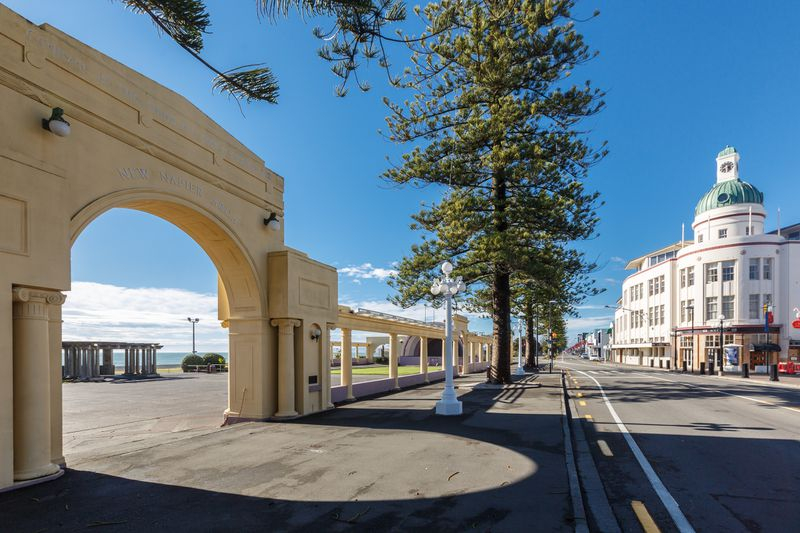
Photo: https://www.tripsavvy.com/ 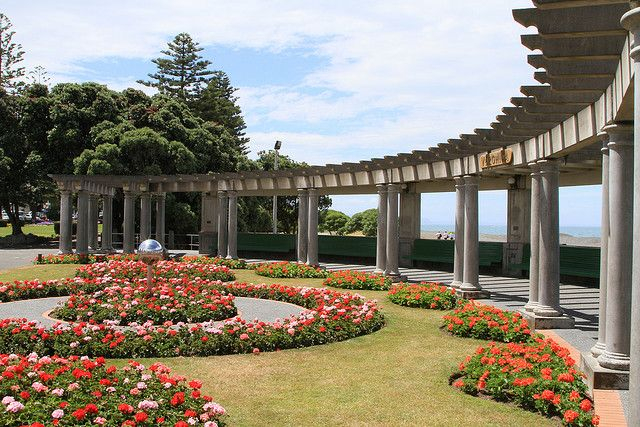
Photo: https://i.pinimg.com/ -
The Botanic Sports Field is the fifth most beautiful historical site in New Zealand. This is a venue that sports lovers will not want to miss. The Botanics Sports Field in Nelson is where the first rugby game in New Zealand was played. Charles Monro was a young local man who studied in England and returned to New Zealand with knowledge of the new sport. Nelson Football Club played Nelson College on Saturday, May 14, 1870, setting off what is now a national obsession. What was the final score? Nelson Football Club won by a score of 2:0.
The Botanics Sports Field is now a huge sports field that hosts a variety of games. It's located beneath the Centre of New Zealand Monument, which offers panoramic views of Nelson, Tasman Bay, and the Kahurangi National Park's highlands. Botanic Sports Field deserves to be on this list because of its long history as a public reserve in Nelson. Not only that, but Botanic Sports Field is also near the Reserve in Nelson's town belt. Botanical Hill, a trigonometric botanical 'New Zealand Centre,' is located near to the park.
Location: Nelson, New Zealand
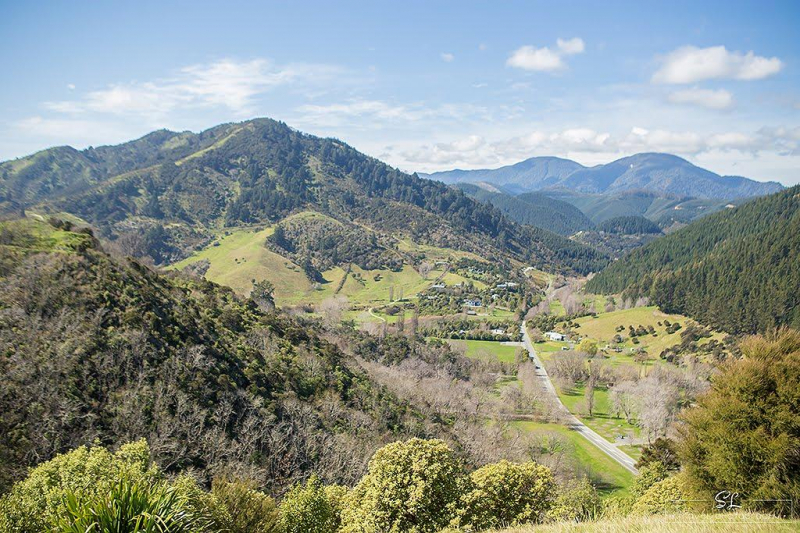
Photo: https://static.popdaily.com.tw/ 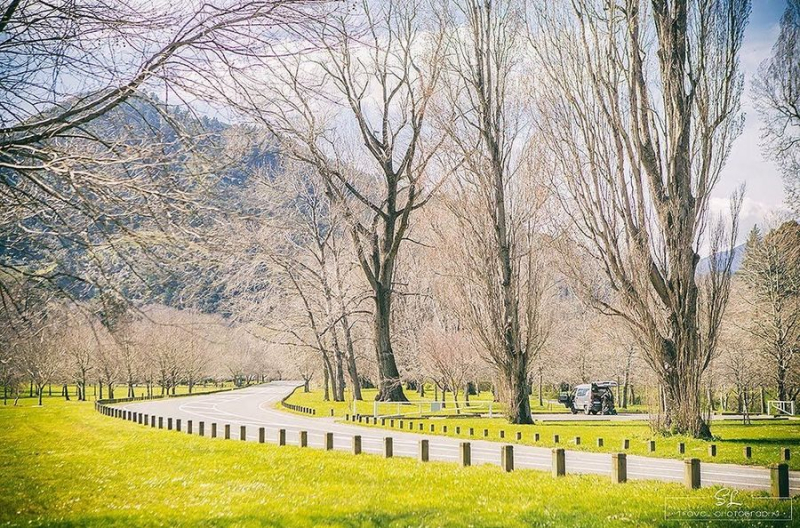
Photo: https://static.popdaily.com.tw/ -
Although New Zealand Aotearoa became a British colony, the first Europeans to land here and interact with Maori people were part of Dutch explorer Abel Tasman's crew. In 1642, they arrived in Whariwharangi Bay, which is today part of the Abel Tasman National Park on the Golden Bay side. His expedition abandoned the area when their first encounter with Maori turned violent, and they continued up to the North Island.
Whariwharangi Hut is located on a mowed lawn a few hundred meters from the beach of Whariwharangi Bay. The hut is essentially a one-and-a-half-story farmhouse, built-in in 1898 by John Handcock and his family, who leased land from local Maori and farmed the valley and surrounding ridges for 15 years. The last permanent residents left in 1926, after which the farm was treated as a herdsmen's residence until farming ended 46 years later (despite the poverty of the granite soil to support the farm). farming was recognized decades ago). The ranch was renovated in 1980 to accommodate backpackers. Next to the hut, there is a large lawn for camping.
Location: Abel Tasman National Park
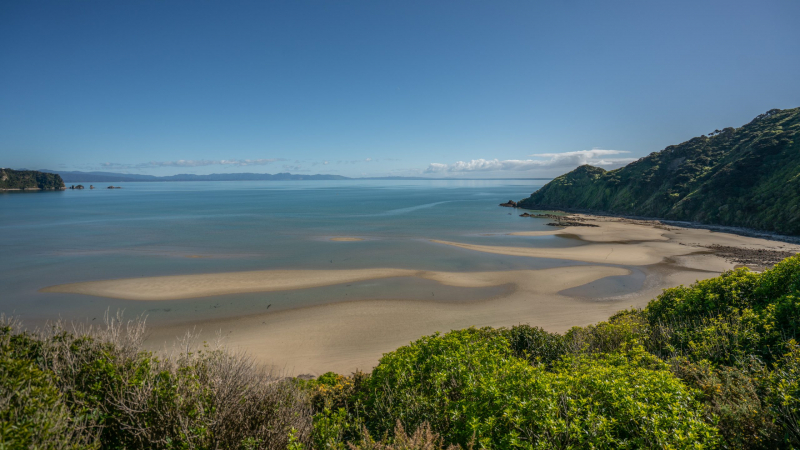
Photo: https://www.schnitzel.kiwi/ 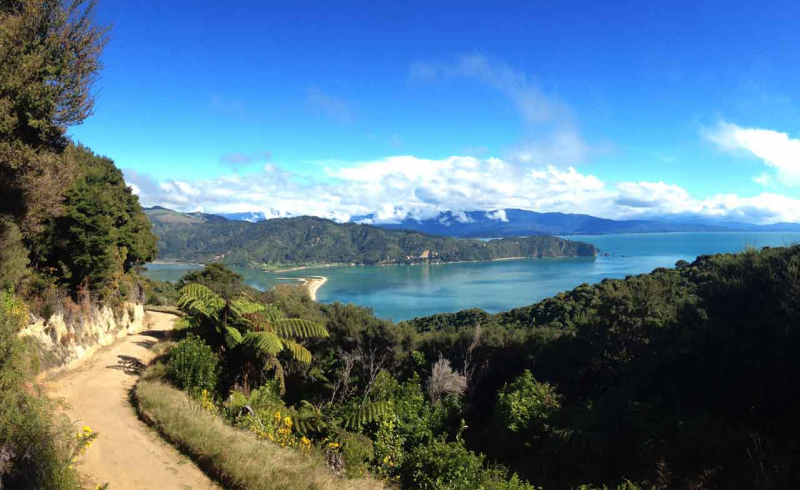
Photo: https://goldenbayhideaway.co.nz/ -
The Marlborough Sounds, at the top of the South Island, are naturally gorgeous but they also contain a historically significant site. More than a century after Tasman first visited the South Island, Captain James Cook made several stops in the Marlborough Sounds in the 1770s. On Motuara Island, near the entrance of the Queen Charlotte Sound, there's a memorial stone marking the place where Cook claimed possession of the South Island on behalf of England's King George III. A pre-European Maori pa (fortified settlement) lies at one end of the island, and the area was where some of the first sustained contacts between Maori and Pakeha (Europeans) occurred. The Department of Conservation presently manages Motuara Island as a bird sanctuary. The Cook Memorial on the mainland is nearby, at Resolution Bay, and marks the start of the beautiful Queen Charlotte Track, a five-day hike.
Motuara Island is a historic and scenic reserve located at the entrance to Tōtaranui/Queen Charlotte Sound. Notable are the actions of James Cook. During HMS Endeavor's stay at nearby Meretoto/Ship Cove, Cook climbed Mount Motuara and officially claimed (and controversially) it and adjacent lands in its name and sovereign use of the British Empire.
Location: Motuara Island, Marlborough 7282, New Zealand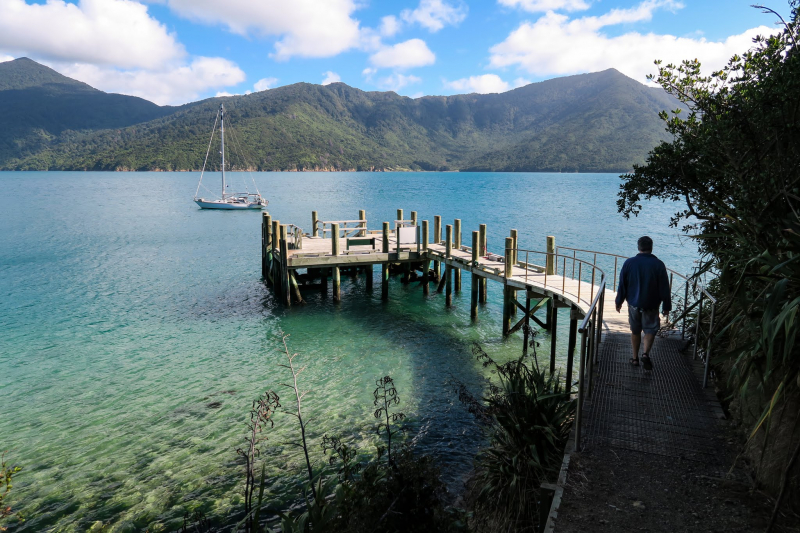
Photo: https://twoatsea.com/ 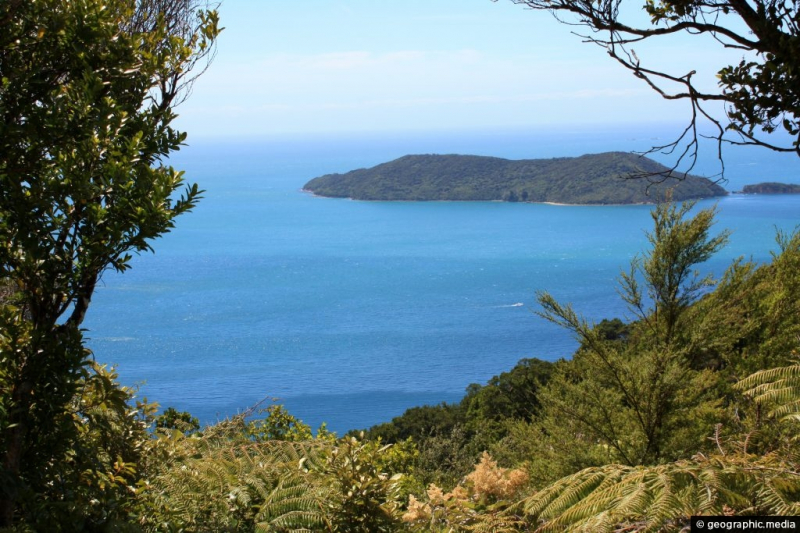
Photo: https://geographic.media/ -
The Wairau Bar is named after a bar or gravel bank that has formed where the Wairau River meets the sea. Early Polynesians who utilized the site as a moa hunting camp left behind butchered bones of various huge birds, as well as human skeletons, according to archaeologists. Because the moa went extinct relatively quickly, maybe within 100–200 years of human settlement, its hunters must have been among the first Polynesian settlers.
It is New Zealand's oldest and one of the most important archaeological sites established by explorers from Eastern Polynesia to New Zealand around 1280. Furthermore, the cultural objects (artifacts) recovered at Wairau Bar are of a separate original form, resembling artifacts from the Cook Islands, the Society, and the Marquesas of East Polynesia.
The Wairau Bar is a 19-hectare (47-acre) cobblestone bar in Cloudy Bay, Marlborough, New Zealand, formed when the Wairau River meets the sea. It is 1.1 km (0.68 mi) long and 0.4 km (0.25 mi) broad, and contains low bushes that are 2 to 3 meters tall (7 to 10 ft). Wairau Bar is the eighth most beautiful historical site in New Zealand, according to the list of the most attractive historical sites in the country.
Location: Wairau Bar Road, Spring Creek 7273, New Zealand
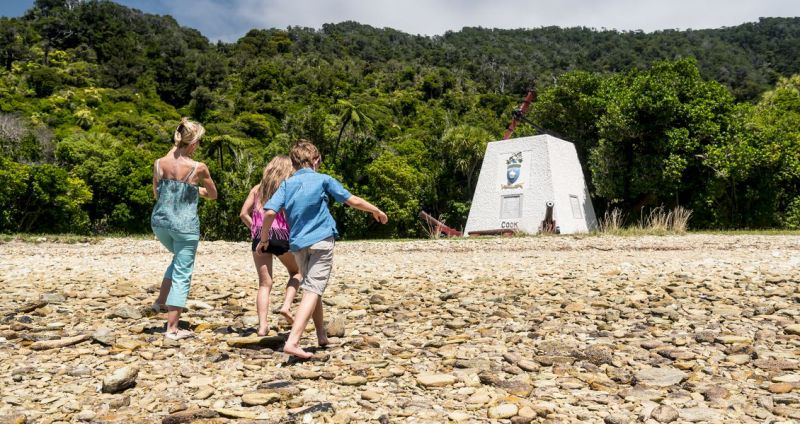
Photo: https://marlboroughnz.com/ 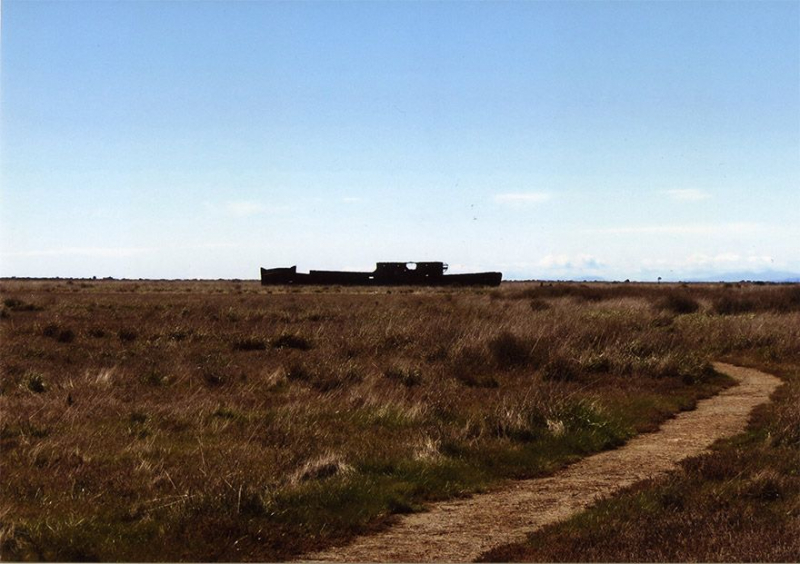
Photo: https://marlboroughnz.com/ -
The Takiroa Rock Art Shelter is an archaeological site in Duntroon, New Zealand, along Highway 83. A limestone bunker on the site contains Mori rock art dating from 1400 to 1900 AD. The shelter is open to the public, and railings have been erected to safeguard the artwork.
Several Maori drawings composed of ocher, bird fat, and charcoal may be found in the Takiroa Historic District. The contents of the shelter may change at any time. Some drawings, such as birds, are perceived as people and animals. European settlers are described in detail, including depictions of horses and ships.Around 1913, a number of works of art were taken from the rock face for display in the museum's collections. In 1930 and 1964, fences were erected to keep livestock and people from harming the artwork, but these measures were mostly ineffectual. The shelter was designated as a Class II Historic Site by Heritage New Zealand (formerly known as the New Zealand Historic Sites Fund) in 1985. The Kingship delegated management of the refuge to Te Rnanga o Ngai Tahu under the Lord Claims Settlement Act Tahu 1998.
Location: Kurow-Duntroon Road, Waikaura 9494, New Zealand
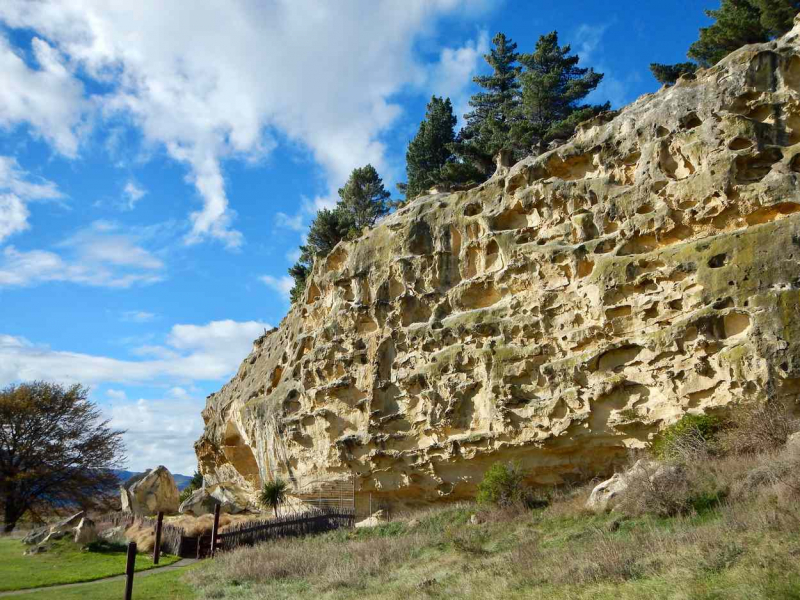
Photo: https://www.tripsavvy.com/ 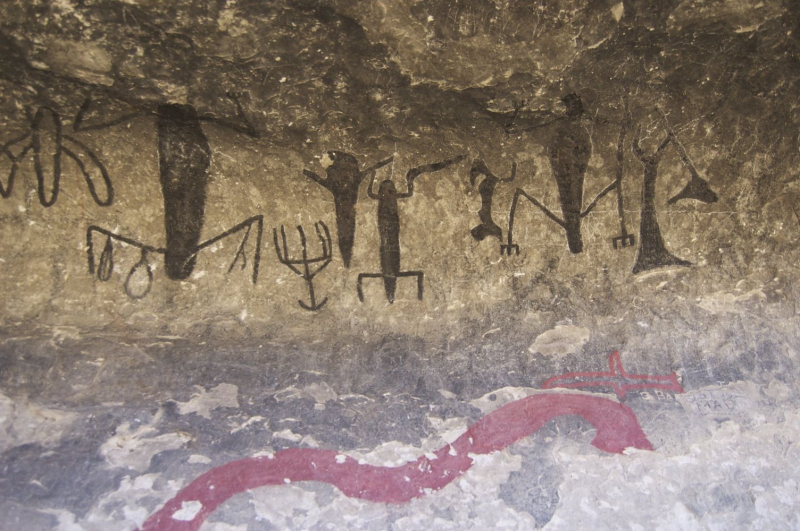
Photo: https://i.pinimg.com/ -
New Zealand has only a few universities due to its tiny size. The University of Otago, located in Dunedin, New Zealand, is the oldest and most prestigious university in the country. Scottish immigrants founded modern-day Dunedin, emphasizing the importance of education for both boys and girls, men and women. The University of Otago was founded in 1869 when Dunedin was only two decades old. Although most campus buildings are significantly more modern in design these days, the elegant neo-gothic clock tower structure was built in 1879 and is a recognizable icon of the university.
The University of Otago is a public university based in Dunedin, Otago, New Zealand. It scores highly for average research quality, and in 2006 was second only in New Zealand to the University of Auckland in the number of A-rated academic researchers it employs. In the past, it has topped the New Zealand Performance-Based Research Foundation's rating.
The university was founded by a committee led by Thomas Burns and was formally established by decree of the Otago Provincial Council in 1869. The university admitted its first students in July 1871, becoming the university. The oldest university in New Zealand and the third oldest in Oceania. The University of Otago is New Zealand's last beautiful historical site on the list of most beautiful historical sites in New Zealand.Location: 362 Leith Street, Dunedin North, Dunedin 9016, New Zealand
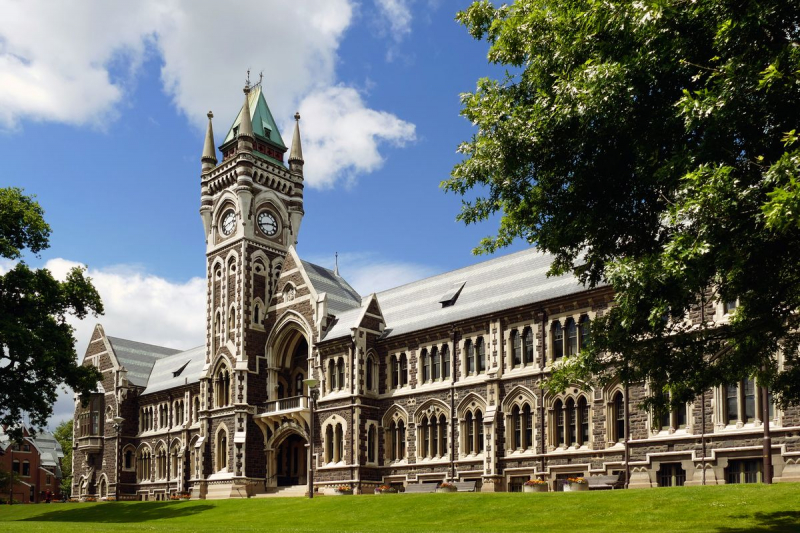
Photo: https://www.dunedintours.co.nz/ 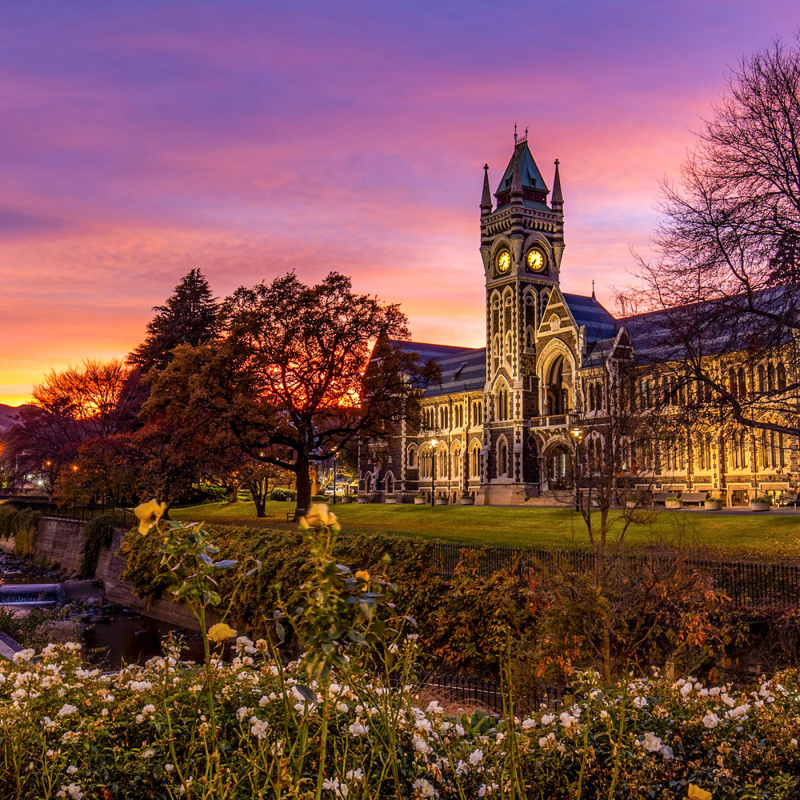
Photo: https://www.otago.ac.nz/












